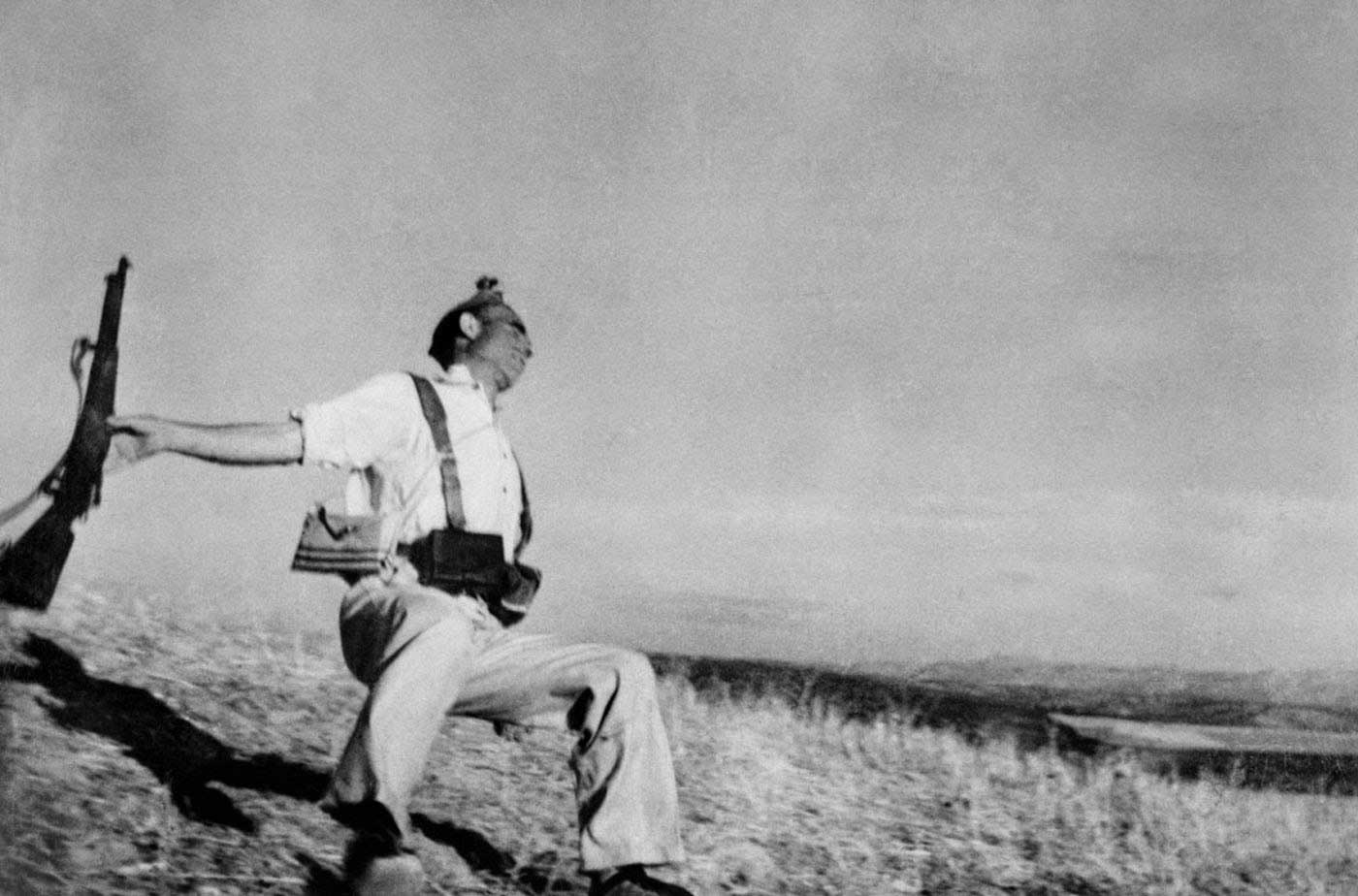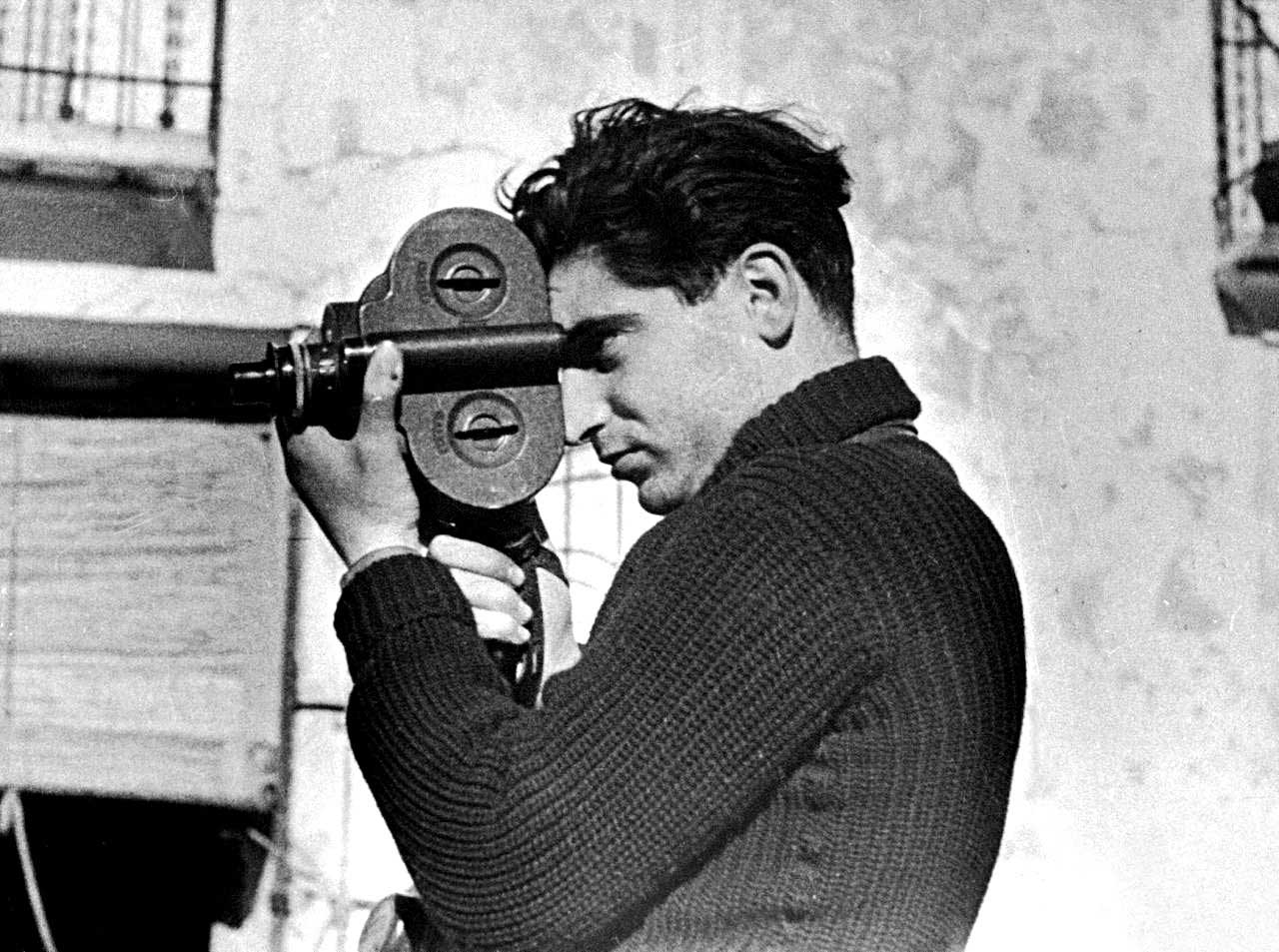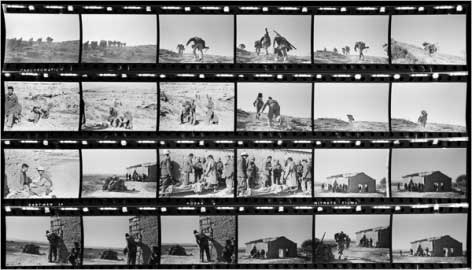The falling soldier; Considered as one of the most impressive war photography of all time, in addition to the most symbolic, widespread, studied and discussed of the Spanish Civil War. Despite being considered a masterpiece, the shadow of doubt questions its authenticity and the controversy has been following it since its publication.
Anyone in the photography trade has seen this picture before, and most likely, those who are not have also seen or heard of it; originally titled as ‘Death of a Loyalist Soldier’, although it’s colloquially known as ‘The Falling Soldier’. What is perhaps less well-known for many, is that it contains a complex and controversial story.

It’s dated from September 5, 1936 and is located in the town of Cerro Muriano in Córdoba. The Hungarian photographer whose real name was Endre Friedmann, was accompanying a group of anarchist soldiers on a seemingly quiet day. Together, they went out in the surroundings of a Cordovan town, to simulate races and jumps between the ravines. Everything went smoothly until the shots of the national side began. The photograph was published in the French magazine Vu on September 23rd of the same year.
In the photograph you can see the Republican soldier Federico Borrell García (the apparent identity of the protagonist), who seems to fall sideways to the ground, while one of his hands holds a rifle that slightly escapes the frame.
The image raised doubts about its authenticity a few days after its publication and is still being questioned today. When it was first shown in the French magazine, it was accompanied by another photograph, taken in the same place, with the same frame and almost at the same time (because of the position of the clouds) of another militiaman who was also falling down, which made many people think that it could be a montage.
Although the original negative has never appeared, it seems that the photograph was taken with a small, lightweight Leica III G of a 35mm negative, which provides a landscape framing of the image.

The problem for the photographer was that in order to move to the next negative, he had to take the camera out of his eye, rewind the film, reframe and shoot again. This meant that a few seconds were lost between shots. If the photographer was able to capture not one but two militiamen killed at the very moment of their death, it would be a great coincidence, although not impossible.
The legendary photograph has brought experts from all over the world to bear on Capa’s entire story: the date, the place, the identity of the dead militiaman and, above all, his veracity. One of the first to question the photo was journalist Phillip Knightley, who in 1975 claimed that it was a montage. In his argument he used the little war activity of those days and that Capa had gone out to do a photo session for the militia. There was no doubt in his mind that Borrell’s image was a pose.
Robert Capa was never too eager to talk about that moment. Apparently, Borrell’s death was so shocking to him that it stuck in his memory, and he resented being asked about it. What he did say in the interview granted in 1937 to the New York World-Telegram (the only time he publicly spoke about the picture) is that “no tricks are necessary to take pictures in Spain. You don’t have to pose your camera. The pictures are there, and you just take them. The truth is the best, the best propaganda.”
Inspecting the original negative would have been of great help, but the official version was that it was not preserved, which was not unusual in those days. However, in 2008, the negatives that Capa had lost in 1939 when he fled France for the United States were made public.

They were 156 photographic reels belonging to Gerda Taro, David Seymour and Robert Capa. About 4,500 photographs that had been found in Mexico in 1995. When examining them, several images of the Spanish Civil War were found, some of them taken on September 5, and that showed that the photo had not been taken where it was said, but in the town of Espejo, about 55 kilometers from Cerro Muriano.
Certainly, regardless of the veracity of the picture, it is a symbol against war. It awakens an anti-war feeling by showing the stark and harsh realities that civilians who remain in their homes are unaware of.






